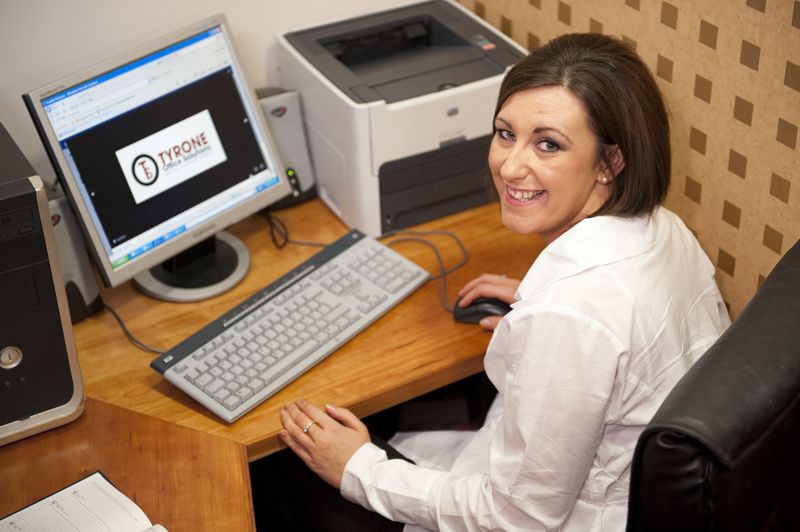3 Tips To Set Up Your Ideal Start Up Office Space
It’s an exciting time: Your latest groundbreaking entrepreneurial idea has evolved into a full-fledged startup.
You’ve snagged some funding, you’re staffing up and you’re ready to make the move from a home office, co-working space or garage to your own space — an official headquarters.
It’s important to keep in mind that even once you find the right real estate, you’re still far from finished.
An independent study carried out by the American Society of Interior Designers revealed that physical workplace design is one of the top three factors that affect performance and job satisfaction. According to the Journal of Public Affairs, Administration and Management, 31% of people who said they were satisfied with their jobs also had pleasant workplace environments, and 50% of those seeking jobs said they’d prefer to work for a company with a pleasing physical environment.
Here are a few tips to help you get your new HQ up and running quickly and effectively so you can continue to concentrate on what really matters — your startup’s success.
1. Collaborate to plan your space
When you’re envisioning your ideal startup space and beginning to make a blueprint for your office’s look and feel, you’ll benefit from seeking input from others — specifically, your employees. They’ll give helpful and valuable insight into what they want and need in order to be efficient and inspired — like equipment preferences, conference rooms and other amenities.
Oftentimes, they’ll provide insights and suggestions you may have otherwise overlooked during your solo brainstorming and planning sessions, says Justin Lee, COO and co-founder of commercial real estate brokerage and platform TheSquareFoot. By consulting with employees when building out the company’s New York City office, he and the other founders obtained different perspectives on things like workflow and conference room usage, which they took into consideration for the final HQ setup.
Some effective ways to gather employee input: Hold a catered lunch or a happy hour brainstorming session, or you can opt for something as simple as an employee survey, using digital services like SurveyMonkey or Google Forms.
“It’s crucial when building out a space that the design is not reflective of just one person’s ideas,” says Jonathan Akhavan, head of people operations at SaaS-based network intelligence provider ThousandEyes. “Office spaces are full of many communities that together build out a mini office ecosystem contributing to the culture and, above all, the happiness, of employees.”
2. Take growth potential into account
According to venture capitalist Tomasz Tunguz, US VC-backed startups in 1998 grew revenue 63% per year on average. In 2014, the median startup grew at 85% CAGR before going public. When you’re outfitting your office, it’s important to account for incremental growth, as it’s more than likely your employee headcount will grow as your startup scales.
But you’re obviously not going to want to move offices every time you add five or 10 new people to your team.
“While the space might accommodate 30 6-foot units now, that might not be the case for 35,” says Bruce Paul, CEO of Swivelfly, the first ‘furniture as a service’ (FaaS) provider. The company offers pre-designed furniture fits to help you make fast and stress-free furnishing choices. In the FaaS model, you lease your furniture, so you can easily add pieces as your company grows, or remove any that you might no longer need.
“We like to plan ahead and choose spaces that allow for adequate growth,” says Akhavan of ThousandEyes. “It’s a lot like Legos in an office space: Up to the creator to build what feels right at the time, fully knowing that one day that design will change.”
One way to do so is to minimize the workstation sizes necessary for your current employees’ needs. You’ll then have more room to accommodate new hires without downsizing existing workspaces.
3. Tailor the space to your startup’s identity
Your office space’s paramount purpose is productivity and functionality, but the space also symbolizes your business’s brand, culture and overall vibe. You’ll want to identify ways to build out your space in a way that reflects the company’s ethos.
A simple (and cost-effective) way to bring company culture to life is to name and decorate conference rooms — something that provides a little bit of fun for employees and visitors alike while supplementing the room’s productivity purposes.
“We’ve seen companies implement names that include pop culture, cities and destinations and even candy,” says Shaun Ritchie, CEO of EventBoard, a cloud-based meeting room software and analytics developer.
At ThousandEyes, the HQ is superhero-themed, a decor decision that stems from the company’s emphasis on creating a personal brand that you believe in. Akhavan also credits this choice to the company’s core belief that what they build and deliver requires nothing short of superhero abilities.
Similarly, it’s important to keep in mind that a customized space can be a huge advocate for your brand. A great space can be a recruitment — and retention — tool.
The final word: Flexibility
As your startup gains traction, there are bound to be many changes along the way, both internally and in your industry at large. It’s important to roll with those changes and be open to continuous adaptation — to keep experimenting to find out what works and what doesn’t.
“Challenge people to learn to work differently,” suggests Bruce Paul. “Move management out of offices into the general workspace. Co-mingle staff from different departments. Create an environment that fosters innovation and unique problem solving.”
Source: mashable.com




